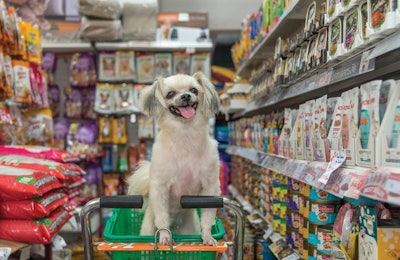
The pet food market has a well-deserved reputation for being recession resistant and even, since 2020, pandemic resistant. For example, pet food and treat sales in the U.S. increased 15% in 2020 and another 15% in 2021, according to Packaged Facts.
Yet retail sales aren’t exactly the same as consumer spending, which in the U.S., is tracked by the Bureau of Labor Statistics (BLS) via an annual Consumer Expenditure survey of more than 42,000 people. BLS has conducted this survey since 1984, so it is established as credible. The downside is that, as with many initiatives undertaken by a government entity, it is the epitome of a lagging indicator: The 2021 spending figures were just recently released.
The data for pet food have helpfully been compiled and analyzed by John Gibbons, aka the Pet Business Professor, showing that pet food spending actually decreased by 6.6%, or US$2.44 billion, in 2021, ending up at US$34.41 billion, compared to 2020’s US$36.84 billion. However, because of the COVID-19 pandemic, 2020 was an anomaly in many ways. What may be more pertinent to the industry’s future and ongoing resilience is that from 2019 (pre-pandemic) to 2021 (as the pandemic was starting to move to endemic phase), pet food spending grew 10.3%, up US$3.21 billion from 2019’s final US$31.19 billion tally.
Some groups of pet owners spent more on pet food
As with pet food retail sales gains, spending increases from 2019 to 2021 were more pronounced among certain demographic groups. “About half of the ‘winners’ are the ‘usual suspects,’” Gibbons wrote, meaning U.S. consumers with advanced college degrees, living in the West, White (not Hispanic), having household incomes greater than US$200,000, having two people in the household and being homeowners with mortgages.
“However, some are surprises,” he continued. Those included retired people, ones living in center cities, consumer units (CUs, similar to households) with no established earners and more than two people, and people older than 75. These groups that increased their spending the most prompted an astute observation from Gibbons: “These winners indicate another impact of the pandemic. We focused on home and family, including our pet children. Our #1 pet concern became their health and well-being. Even low-income groups committed to high-quality pet food.”
The groups whose pet food spending dropped the most from 2019 to 2021 included self-employed people, married couples with children younger than 18, ones with household incomes of US$100,000 to $149,000 (somewhat surprisingly), people 55 to 64 years old and baby boomers. Gibbons suggested that these may have been among people who “binge bought” pet food the most in 2020, leading to spending drops in 2021 when the situation became more stable.
The bottom line is that, despite the falloff in spending from 2020 to 2021, the “pet food segment has essentially returned to the strong growth rate it’s had since 2014,” Gibbons said. That also means a strong foundation for the industry to continue to build on.

















